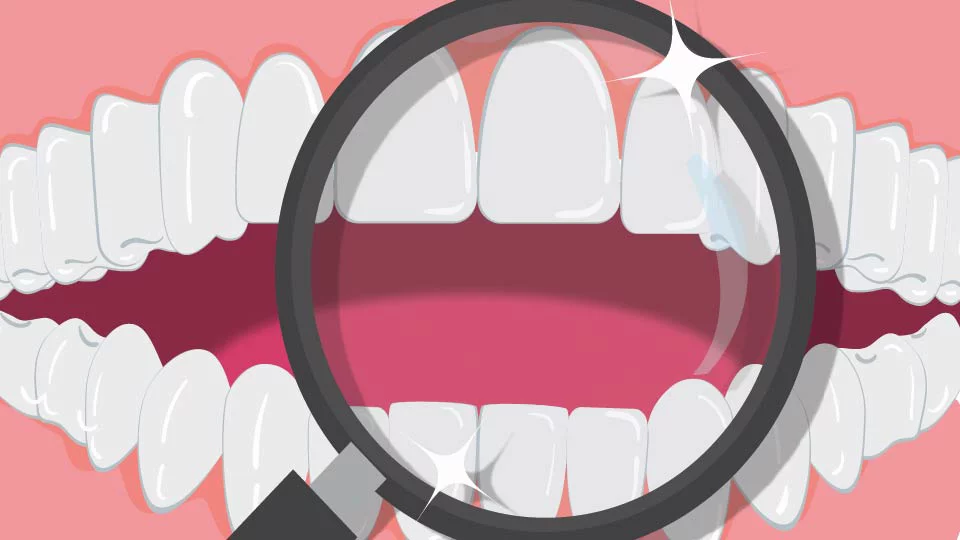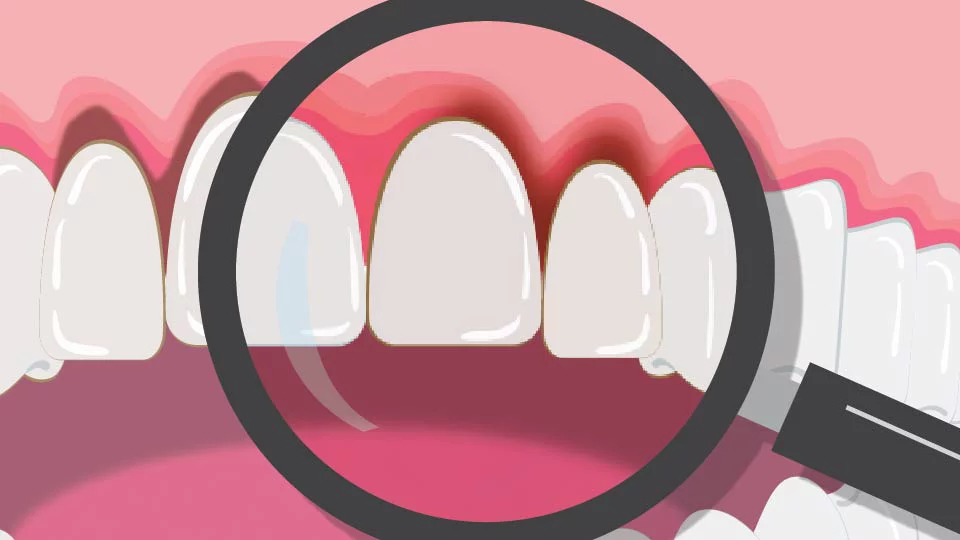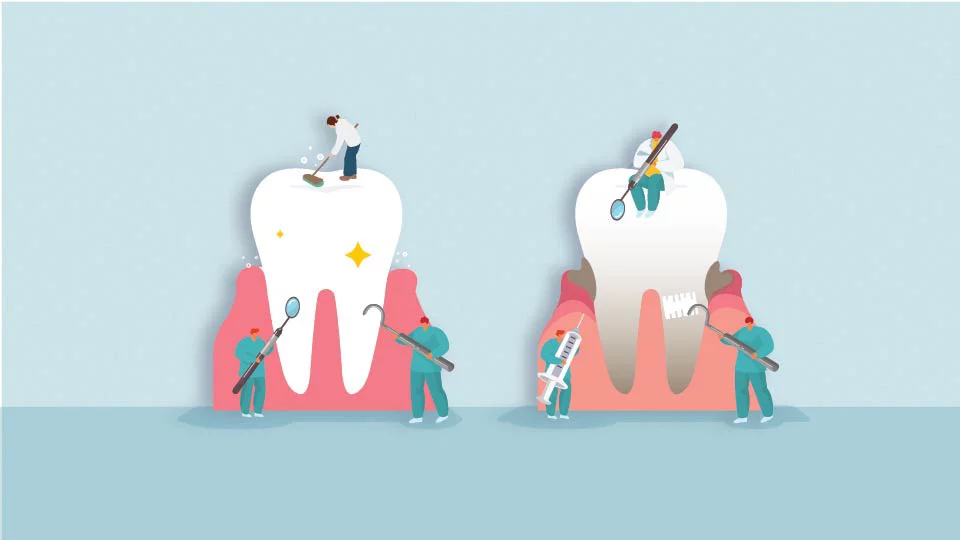Good oral hygiene is crucial to your mouth's health and your overall well-being. Every day, carbohydrate particles from the foods you eat mix with bacteria, creating a filmy substance called plaque that coats your teeth and can lead to tooth decay and gum disease if not cleaned off.
After only 48 hours, if this plaque isn’t removed with your toothbrush, it can harden into tartar, also called calculus, which can harbor bacteria around your gums, eventually leading to gum disease and tooth loss unless treated by a dentist. In addition to brushing and flossing, having a professional dental cleaning every six months to a year will ensure that your mouth stays healthy.
But not all routine dental appointments are the same. After your initial evaluation and x-rays are completed, it may be recommended that you either have a regular dental cleaning or possibly a deep cleaning.
The purpose of both types of cleanings is to remove bacteria-laden tartar, but the location of the buildup and whether or not gum disease is present will determine which type of cleaning you need so you can restore your mouth back to full health. Read on to learn more about deep cleaning teeth vs. regular cleaning teeth and the differences of each.
Regular Cleaning
If you have kept most of your dental appointments in the past and are good about brushing and flossing your teeth each day, you may only need a regular cleaning, also known as prophylaxis. You may have minor calculus buildup on your teeth that needs to be addressed, but it should not be below the gum line.
During a regular dental cleaning, you will experience the following procedures:
A regular cleaning will start with the hygienist using a dental tool called a scaler to gently scrape away any hardened plaque that has accumulated on your teeth.
Once all the big buildups are removed, your teeth will be brushed using a special toothpaste that scrubs and polishes your teeth. Because of its gritty consistency, this toothpaste should not be used more than once or twice a year, or it could damage your teeth enamel.
Your dental hygienist may even floss your teeth before rinsing out your mouth.
The last step of a regular dental cleaning includes a fluoride treatment that will help protect your teeth from developing cavities between cleanings.

Benefits of Regular Cleaning
While your daily teeth brushing removes the sticky biofilm called plaque, a regular teeth cleaning removes hard tartar that your toothbrush cannot easily remove. Benefits of regular dental cleanings include:
- Removal of tartar
- Polished teeth
- Extended protection of teeth from the fluoride treatment
- Discovering early signs of gum disease
- Prevention of tartar from getting down in the gums, causing more serious problems
Disadvantages of Regular Cleaning
While a regular cleaning is overwhelmingly positive for your oral health, there are a couple of disadvantages to note:
- It is possible that getting your teeth cleaned by a dentist too often can irritate tooth sensitivity or even damage the tooth enamel. If you experience any sensitivity after a cleaning, always communicate this to your dentist.
- Without insurance, teeth cleanings can cost between $75 to $200. This out-of-pocket expense can be quite costly, especially for families with multiple children who each need to see the dentist twice a year.
Dental Deep Cleaning
If your dentist notices that you have tartar at or below the gum line after probing around in your mouth and examining x-rays, a deep cleaning will be recommended to remove tartar and treat the gums.

Tartar can begin to collect under the gums, creating pockets between the tooth’s root and the gums. These pockets can deepen and widen as they fill up with more tartar and bacteria, allowing periodontal disease to thrive. Your dentist will measure these pockets and the spaces between the teeth to determine the gum disease's severity.
Two processes associated with deep cleanings are scaling and root planing.
Scaling involves using a scaler to remove tartar from the teeth and the pockets between the tooth and gums.
Root planing is a procedure that encourages the gums to regrow over the tooth’s roots. Your dentist will go over the roughness of the roots so that they are nice and smooth. Tartar will have a harder time sticking to the smoothed surface of the roots. As the gum disease is treated, your gums will become less inflamed and eventually reattach to your teeth.
Benefits of Dental Deep Cleaning
As the space between your teeth and gums continues to fill with tartar, your gums will begin to recede, exposing more and more of the roots of your teeth. You may mistakenly think that your teeth are suddenly looking longer. Not only will your gums become sensitive and inflamed, but you could also eventually lose your teeth as gum disease affects the roots and bone that hold the teeth in place.
By cleaning out these pockets during a dental deep cleaning, you can experience the following:
- A freeze of gum disease progression
- Less gum bleeding
- Possible regrowth of gums around your tooth roots
- Healing gums with less inflammation
- Prevention of tooth loss
Disadvantages of Dental Deep Cleaning
Deep cleanings involve more invasive procedures than a regular dental cleaning. While deep cleanings are necessary to block periodontal disease from worsening and to promote healthy gums, there are a few disadvantages to this process, including:
- Sometimes, deep cleanings cannot be completed in a single sitting and require a second appointment.
- Because the cleaning occurs under the gum line, there may be more discomfort and recovery than with a regular cleaning. Local anesthesia may be used during a deep cleaning. You may need painkillers after the anesthesia wears off if you experience continued discomfort.
- While gum disease can cause your gums to become inflamed, swollen, and sensitive, deep cleaning can irritate the gums further, even though it will eventually decrease these symptoms.
When to Schedule a Dental Deep Cleaning
Getting your mouth regularly before a dentist is the best way to know when to schedule a dental deep cleaning. Unless you experience pain or discover signs in some of your front teeth, it can be difficult to see what is happening in your mouth.
Periodontal disease can be painless, so keeping regular appointments and listening to your dentist’s recommendations will help determine when a deep cleaning is needed. For adults over 30, over 42% of Americans suffer from chronic periodontal disease, so it is important to maintain oral hygiene to prevent serious problems with your teeth and gums. Signs of periodontal disease are:
- Red or dark purple gums instead of a healthy pink
- Swollen gums
- Bleeding gums
- Inflamed gums
- Sensitivity to hot and cold
- Receding gums to expose the roots of your teeth
- Gums that do not fit snuggly around your teeth
Call your dentist and schedule an appointment if you notice any of the above signs of gum disease. Your mouth may need a deep cleaning, and it is important to see a dentist before these symptoms worsen.
Signs of gum disease are a big red flag and need to be addressed promptly. The disease will not go away on its own, and brushing harder will not correct it. In fact, if you have gum disease, strong downward or upward strokes with a toothbrush could even push the gums to recede further.
The Importance of Professional Dental Cleaning
When comparing a dental deep cleaning vs. regular cleaning, the most important thing you can do to boost the health of your mouth is to keep routine appointments with your dentist. While regular cleanings will prevent tartar from making its way down into the gums, eventually leading to gum disease, a deep cleaning will stop any current gum disease in its tracks. So both are worth doing.
At your dental appointment, you may experience pressure when the tartar is gently scraped off your teeth, but it should never be too much for you to handle. If it is, communicate this with your dentist. During a deep cleaning, your gums will be numbed so you won't feel discomfort.
During a regular cleaning, you can expect the cleaning to take 15-40 minutes, depending on how stubborn the tartar is on your teeth. A deep cleaning, however, could take up to a couple of hours, depending on how extensive the tartar buildup is on the teeth and in the gums. A second appointment may be needed to complete the removal of the tartar.
You should always expect the very best care from your dentist. If you need a dentist in your area because you are due for a dental appointment or have noticed signs of gum disease, check out Smile Generation's Find a Dentist tool to discover excellent dentists in your community today.
Find your trusted, local dentist today!
Sources
Smile Generation blog articles are reviewed by a licensed dental professional before publishing. However, we present this information for educational purposes only with the intent to promote readers’ understanding of oral health and oral healthcare treatment options and technology. We do not intend for our blog content to substitute for professional dental care and clinical advice, diagnosis, or treatment planning provided by a licensed dental professional. Smile Generation always recommends seeking the advice of a dentist, physician, or other licensed healthcare professional for a dental or medical condition or treatment.









